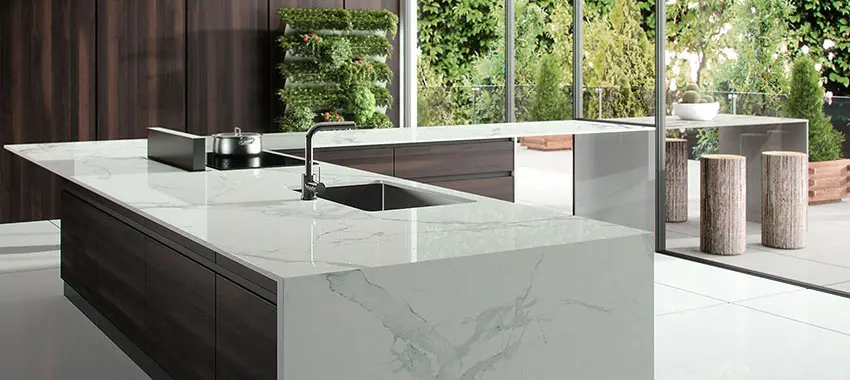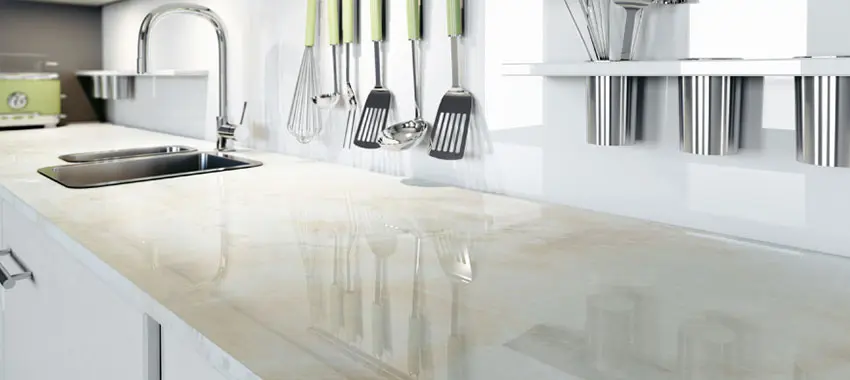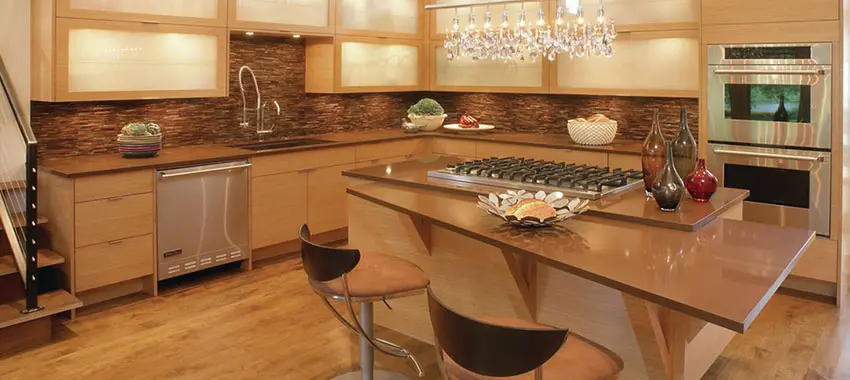Feb
How Do You Keep Quartz Countertops Clean And Shiny?
When you install quartz countertops, you want to keep them looking clean and shiny, and the good news is that it’s possible to do it. How do you go about it?
Here are ways to keep quartz countertops clean and shiny:
Stay on top of daily maintenance
How you handle your countertops daily goes a long way towards determining how they look in the long run.
As a rule of thumb, make it a habit to clean the countertops every day. You remove dust, liquid spills, crumbs, and bacteria by doing this. And the beauty is that you don’t need to be fancy how you go about the cleaning.
Simply wipe the counters with a wet, soapy rag, and you are good to go. You can use a mild all-purpose cleaner to have better results but steer clear of abrasive or harsh products that might etch and dull the surfaces. This calls for you to stay away from oven cleaners, bleach, dishwashing soap, degreasers, and paint striper.
Besides cleaning the countertops, you should make it a habit to clear any spills as soon as they happen. This is mainly to prevent stains from developing.
Treat stains immediately
Even with the best care, it’s common for accidents to happen, and they go unnoticed, leading to stains.
Although quartz is stain resistant, coffee, tea, red wine, and other dark-colored liquids can leave marks when you don’t remove them early enough.
If your countertops have developed stains, you shouldn’t give up on them—try to remove them. And the cool thing is that it’s possible to do it.
One of the best ways to remove the stains is using an adhesive remover that has been proven to do the removal without damaging the shine. All you need to do is to cover the stain with the adhesive remover, then let it sit for at least 15 minutes, after which you should wipe the area with a clean cloth.
Finish it off by rinsing the surface with clean, warm water.
Use hot pads and cutting boards.
On first look, quartz countertops look tough and indestructible, but they aren’t. While the countertops are heat resistant, they aren’t heatproof. This means that when you repeatedly expose them to a lot of heat, you are bound to damage them.
To keep your counters in top shape, you should protect them from heat. This calls for you to avoid placing hot pots, pans, and other hot items directly on the countertops as you will damage them. Instead, you should have cookie sheets, hot pads, and other protective materials on the countertops to protect them from hot items.
When chopping vegetables or any other materials, don’t do it directly on the countertops—instead, have a chopping board in place and chop your materials here.
Don’t place heavy materials on the edges.
Even if a cooking pan is cold, don’t place it on the edges of the countertops as you risk cracking them. When placing a heavy item on the countertops, do it gently and with utmost care to don’t damage the countertops.
The same way you shouldn’t place heavy pans on the countertops is the same way you shouldn’t sit on the countertops as you risk damaging them.
Regularly remove gunk from the countertops.
Like spills, gunk, and caked-on crud from food and dirt will adhere to the countertops. To keep your countertops looking clean and shiny, you should scrape off the gunk whenever you notice it. For the best outcome and avoid damaging your countertops, use a hard plastic scraper to scrape the gunk off.
As a rule of thumb, never use metallic materials to damage the countertops.
Keep permanent markers away.
If you have kids, they will want to draw on anything, including your precious quartz kitchen countertops Potomac.
Unfortunately, the drawings and writings are hard to come out of, especially if they are made using permanent markers. Although, you can remove permanent markers from quartz, you require harsh chemicals to remove them, which can etch your surfaces, risking the shiny finish.
To avoid removing the markers, be strict and enforce that no one should write or draw on the countertops.




